At its core, Blue Ruin is a statement of purpose from writer-director Jeremy Saulnier, much like Blood Simple was for Joel and Ethan Coen in 1984. Both films focus on revenge and the various complications that arise from such retribution. Macon Blair’s Dwight, a vagrant who tries to turn vigilante when the man who killed his parents is released from prison earlier than expected, is the opposite of a gun-toting action hero. He’s meek and, once he shaves off his scraggly beard, unassuming; Dwight appears more at home wielding a mouse pad at a desk
job than a shotgun in the American wilderness. But he’s as desperate as he is determined, trying to wipe out the hillbilly who ruined his life as a young man. Blair, a relative unknown, is excellent as the quiet protagonist who’s smart enough to know he’s out of his depth, but not smart enough to avoid bloody temptation. And Saulnier, who functions as cinematographer, stages each sequence deftly and honestly, creating as much of a meditation on violence as a suspense thriller. Blue Ruin is not just one of the year’s best films; it’s one hell of a calling card. — Josh Spiegel
Since its trailblazing premiere in Cannes’ Un Certain Regard in 2013, Stranger By The Lake has remained haunting with its directorial perfection, edgy subject matter, and command of editing, locale, and mood. An erotic thriller set in a secluded gay cruising spot somewhere in France, Alain Guiraudie’s foray into the no-man’s-land between sex and death is so delicate in its treatment of lustful human flesh (and of the exclusively outdoor setting), it would have pleased Walt Whitman. No other mainstream film in the history of the medium has been this casual in showing full frontal male nudity: both in an innocent, Eden-like way, and
in full erotic gear that somehow never becomes pornographic. At the center of the story is Franck (Pierre Deladonchamps), who falls hard for the homicidal Tom Selleck lookalike Michel (Christophe Paou) and develops a platonic friendship with another beach regular, Henri (Patrick d’Assumçao). It’s a measure of Guiraudie’s assured touch and crystal-clear focus that the hot action in the sand is never more compelling than Franck and Henri’s long, near-philosophical exchanges on the nature of love, desire, and companionship. Apart from everything else, this would make for a terrific triple-bill with Mr. Hulot’s Holiday and Jaws. — Michal Oleszcsyk
From The Strange Little Cat to Under the Skin, 2014 saw many filmmakers experimenting with form. Pawel Pawlikowski follows suit with Ida, a stark yet beautiful exploration of the lives of two women separated by tragedy. As a nun-in-training nearing her vows, Agata Trzebuchowska is iconic—in the religious sense—as Anna. Pawlikowski’s static camera studies her face as she gracefully gazes upon the horrors revealed to her. Instructed to visit her last remaining relative, her Aunt Wanda, an alcoholic ex-judge, Anna’s true identity is revealed: her real name is Ida Lebenstein, and she’s a Jew whose family was killed during
the Nazi occupation. As they journey to find their family’s burial place, Ida’s black-and-white cinematography emphasizes the juxtaposition of Ida and Wanda as they traverse their dark past. Ida’s purity and Wanda’s despair converge into shades of grey familiar to our world. Ida’s compositional elements are as jarring as the color palette. Whole frames are askew, often centered on the spaces above characters, emphasizing the film’s focus on dissonant identities and religious questioning. Ida is a film for our time, a post-modern, Bergman-like rumination on finding one’s way amid life’s horrors. — Colin Stacy
As all roads lead to Rome, all Russian works of literature lead to a descent into madness, and Fyodor Dostoyevsky could not have found a more direct path with his 1846 novella The Double. The canonized writer and Richard Ayoade, the director of this year’s brilliantly crafted film adaptation, hinge their stories upon the familiar and aggravating sensation that somebody’s out there living a better version of your life. Meek office drone Simon James can only sit by helplessly as his antithetical doppelgänger James Simon (both Jesse Eisenberg, giving a
performance listed under the dictionary definition of range) usurps his professional, then romantic, then existential ambitions. But the true pleasures here are aesthetic, not thematic. In Ayoade’s capable hands, every element of the film’s design provokes awe. Invisible things—light, shadow, silence—become palpable. While a dark sense of humor balances The Double’s stylistic intricacies with raw heart, Ayoade indulges in a rich satire of corporate culture and the funny little indignities of loneliness and existential despair. — Charles Bramesco
RRegardless of how old he is, Xavier Dolan’s Mommy is an impressive credit for a filmmaker of any age. Perhaps it’s because the film deftly reaches soaring emotional heights, a melodrama filled with a torrent of passion and pathos, as if it’s simply a reflex for Dolan. Perhaps it’s because the people he tells stories about start off initially as caricatures, then become painfully, irrevocably real, and raw humans. Perhaps it’s because his humanity, rather than his penchant for stylism, is one of the most fascinating things about the young Cannes Jury Prize
winner. In a way, Dolan’s films are essays, elaborating on abstract concepts regarding emotion and feeling, which propel his filmography. How does one articulate the ferocity of a tempestuous mother-son relationship through the eye of a camera? It’s a storm of yelling, shouting, narrow aspect ratios, on-the-nose music choices; but while the odds may be against Dolan and his fifth film, he does everything right, and cuts to the heart of the film. Despite its 1:1 aspect ratio, the power of Mommy will flood the screen and, subsequently, your heart. — Kyle Turner
Jafar Panahi’s latest film, the second made during his 20-year ban from filmmaking, could easily be titled “Portrait of the Artist as a Prisoner” and may be his best yet. Closed Curtain, co-directed by its star, Kambuzia Partovi, externalizes the internal, collapses public and private spaces, conflates fiction and documentary, reveals new possibilities for digital cinema, conjoins dream and reality, and is extremely enjoyable while doing all of these things. It begins as a modest story of a writer who reluctantly harbors a pair of quasi-fugitives but takes one surprising turn after another until it seems to abandon that story despite preserving its
characters and asking us to re-evaluate everything we’ve seen. Many of Closed Curtain’s pleasures should be experienced, not spoiled, so hopefully the film becomes more available soon. One may be inclined to give the film praise for existing, seeing as the circumstances of its production are a miracle. The real miracle is that, despite working under the most constricting conditions imaginable, Panahi and Partovi still delivered one of the year’s best films, transcending its background, reaching nuanced conclusions about art and artistry, and taking risks that would be as shocking regardless of whose name adorns it. — Forrest Cardamenis
The Lego Movie shouldn’t work. It’s a self-aware piece of nostalgia-driven product that is, itself, about the power of nostalgia, and it gleefully kicks dirt over the line between the remembrance of one’s childhood and the consumerist promotion of same. But co-directors Phil Lord and Christopher Miller, tasked with finding a story in such a mess, run head-first into the fray and wind up with an animated movie that’s charming, heartfelt, and a surprisingly moving look at how the trinkets that fill our childhoods are, at best, just a means of connecting with somebody
else. Chris Pratt’s voice work in the lead role captures the right mix of innocence, sly humor, charm, and wide-eyed honesty required to make such a tricky concept work. It’s reminiscent of Will Ferrell’s wire-walking performance in Elf; in a bit of baton-passing, Ferrell appears here as the villain. Lord and Miller likely have a time limit on how long they can keep making recursively self-aware comedy hybrids—they also gave us 21 Jump Street and 22 Jump Street, as well as the animated series Clone High—but it’s comforting to know they’ve mastered the form. — Daniel Carlson
The overture of Antichrist linked despair to the orgasm; the opening of Melancholia linked it to marriage. The beginning of Nymphomaniac binds despair to the anatomy itself: we cut from Joe (Charlotte Gainsbourg) beaten down to a pulp into shots that zoom into the open orifices of surrounding buildings, snow and rain leaking from their crevices. Thus begins Lars von Trier’s eight-chapter tragicomic epic, which catalogues sexual variances (a montage cycles through flaccid cocks of differing sizes, as if shuffling cards) as it catalogues the trademarks of his oeuvre; each chapter has its own aesthetic, many cribbed from prior Trier
films. Joe is picked up by Seligman (Stellan Skarsgard) and for his trouble, she rewards him with her lengthy story. He interrupts with digressive responses, which invariably lead to dialectic arguments on abortion, infidelity, the taboos of language, and any other topic her raconteuring invokes. The dynamic isn’t liberal vs. conservative, it’s the intellect vs. the senses: a fractured personality, at its lowest, arguing with itself. The apocalyptic finale—the carnal and the intellectual failing to co-exist—only confirms Nymphomaniac as abstract psychological study, more so than erotic provocation. A self-portrait on a snowy night. — Jake Mulligan
The lashing action of a whip. A jerk or jolt suddenly, as to cause injury. Every form of the word whiplash is used in great detail for Damien Chazelle’s magnum opus. J.K. Simmons’ performance as musical genius Terence Fletcher, who demands perfection from his students, is a tour de force. He discovers a young musical talent in Miles Teller’s Andrew Neiman, a drummer at the Shaffer Conservatory. What transpires could be described as a form of tough love, but Fletcher’s
teaching is more akin to abuse. One of the scariest lines of the year might be Fletcher barking at his students, “Not my tempo.” Neiman must master the right tempo of jazz tunes “Whiplash” and “Caravan” to become the best, but at an extreme cost to his own well-being. Whiplash is a rush, mixing brutality and beauty into a tight cinematic package. Few films will leave audiences as breathless. — Max Covill
Call it slow cinema at your peril. Over 138 minutes, Tsai Ming-liang turns a homeless father’s existence on the streets of Taipei into an odyssey of exhilarating despair, wielding the kind of pulse-quickening formal vigor of which movies half as long—and twice as fast—can only dream. The downward spiral of an unstable alcoholic (Kang-sheng Lee), estranged from his wife and fending for two children, isn’t exactly for the frail of spirit, yet Tsai’s mastery of melancholy is matched by his exquisite humanism—best evidenced in one of modern cinema’s most
memorable long takes, a moment of emotional watershed not easily forgotten. Perhaps surprisingly, there’s some of the year’s greatest comedy here, too: a scene in which Lee’s character dismantles and devours a cabbage fashioned in the likeness of his wife is the kind of deranged physical mirth you’d expect from Monsieur Merde, made all the more hysterical for the grim context in which it occurs. And to think: Stray Dogs is a warm-up for Tsai’s Journey to the West, where things really go next-level. — Luke Goodsell
Woe to the shepherd; he has outlived his usefulness in our modern, jaded times, or at least he’s about to. In Calvary, the bleak second film by John Michael McDonagh, spirituality and faith are both examined through genre-blended lenses—the shadowed mourning of film noir, the macho solitude of the Western—and placed squarely on the shoulders of the indelible Brendan Gleeson. For lack of better phrasing, Gleeson is Calvary, though McDonagh has assembled a
motley crew of supporting thesps, ranging from Dylan Moran, to Chris O’Dowd, to Kelly Reilly, for the great Irishman to vibe with as his doomed priest tries to say his goodbyes, make his amends, and tend to his flock before meeting his fate at the hands of a vengeful, emotionally scarred parishioner. But outside of Gleeson’s incredible performance, Calvary says much and more about human indifference and how easily we judge while letting ourselves off the hook for our own indiscretions. —Andrew Crump
There are quite a few targets in the sights of writer-director Dan Gilroy: contemporary employment issues, ambition at any cost, but the real meat of the film is the horrifically inhuman trade where human suffering is calculated into a price tag and then cut into a check each morning. Nightcrawler isn’t solely about the flawed nature of news coverage 21st Century, but it lands more than its share of punches in that regard. Like other recent profiles in ambitious men (There Will Be Blood, Foxcatcher), Nightcrawler takes a particularly unlikable man and watches him ascend to unimagined heights much to the horror of audiences. Louis
Bloom (Jake Gyllenhaal) is unafraid of distastefully crossing the line of observing a story and, instead, manipulating it for more cash, among other incidents. Even Daniel Plainview would shy away from blackmailing a coworker into a sexual relationship. Gyllenhaal fully commits to playing an opportunistic sociopath who offers an image of himself as whatever is needed for the situation. It’s not hard to imagine him as one of the cockroaches left after the nuclear apocalypse. A brave move, centering a film on a lead like that, and Nightcrawler is better for it. — Colin Biggs
18) Actress
Directed by Robert GreeneAdocumentary about The Wire bit player Brandy Burre attempting to resurrect her acting career after a self-imposed domestic exile. An intrusive home movie of a collapsing marriage. An extended performance piece disguised as biography in which a woman named Brandy Burre portrays a character named ‘Brandy Burre’ through a recreation of her own increasingly fractured existence. At some point, Robert Greene’s Actress bifurcates into a house of mirrors, full of empty space that viewers
have to fill in for themselves. But while Birdman’s lauded Hollywood satire cries crocodile tears for the aging action star with Raymond Carver in his heart, Actress finds everyday tragedy in the life of a young woman standing in the ruins of her life and trying to dig her way out. Burre’s own self destructive culpability, and the extent to which this is all just another performance, remain mysterious. But no other movie this year evoked so much while doing so little. — Adam Hofbauer
Fighting spirit drives Isao Takahata’s films: Orphans against wartime in Grave of the Fireflies, a girl’s desires against all that represses them in Only Yesterday, raccoon dogs against an industrial economy razing their environment in Pom Poko, one silly family against professional culture in My Neighbors the Yamadas. Hayao Miyazaki, Takahata’s old protégé, centered The Wind Rises around a related quote: “We must live!” To which Takahata’s The Tale of the Princess Kaguya responds: “Why?” It refashions an ancient Japanese myth into a fable that wonders whether we’d desire an Earthly life, should we look on it from afar. His princess lands with a gold stipend, influencing her adopted father to lock her up as royalty, and vain suitors to approach her crassly—all keeping
her from the man she loves. Takahata sketches the tragedy with amorphous lines and non-animated space, creating purposefully unfinished imagery, leaving space for evoked response. Symbolic flourishes worthy of Murnau (a face within the moon, a bamboo stalk leaking gold,) and mise-en-scène worthy of Mizoguchi (Kaguya is centered in the frame when her beauty is tended to, otherwise placed in positions of submission, shades of Princess Yang Kwei-Fei,) are given equal emphasis. In that balance—the bridge between the transcendent and the trivial—the film finds its answer: Life not for love, family, or success, but for sensual beauty, through better and worse. For soft brushstrokes. — Mulligan
It’s great news that Alejandro González Iñárritu has abandoned his heavy-handed “we are all connected through our miserable lives” shtick, as Birdman—his masterpiece—finally puts on display the kind of meticulous cinematic storytelling he must have always had in him. One could falsely be tempted to label Birdman’s unbroken imagery—gloriously shot by Emmanuel Lubezki in a seeming single take—as a gimmick. But in fact, it is the very source of the imminent, urgent danger brewing underneath the film’s surface, as well as the heart and soul of the film’s story on Riggan Thompson (Michael Keaton), a Hollywood ex-superhero
trying to restore his acting career and regain the respect of industry by trying his hand at staging and acting in a Broadway play. As the play’s preview period signals one artistic disaster after another, Iñárritu tightly controls all traffic on, behind and beyond stage, effortlessly orchestrating the mutual high stakes of his stellar ensemble (Keaton, Edward Norton, and Emma Stone being the most memorable) for maximum dramatic impact. The end result is a terrific, darkly funny and partly fantastical satire on the machinery called entertainment that does not spare its punches on anyone’s vulnerable ego; creator or critic. — Tomris Laffly
We Are the Best! is an action movie the way John Cassavetes dramas are action movies; the way all the great movies are action movies: It’s lit from within by its characters’ emotions and propelled by their raging energy. For their actions to thrill as forcefully as those of an actual action flick, you’d have to be interested in the yearnings, joys and setbacks of everyday people—in this case, three 13 year old fledgling punk rockers in Stockholm circa 1982. Tough sell these days. We Are the Best! is as packed with people as any of Moodysson’s great
humanist comedies, this time around with his distinct romantic realism at once more finely honed and looser than ever. Like a master painter whose grip on the brush travels further away from the bristles with the confidence of age, Moodysson fills his modest canvas with bold strokes. One lovely touch is the presence, on the margins, of hilariously corny, embarrassing parents, whose love and care make this 3-girl punk rebellion possible. Friendship and family rendered incandescent. — Steven Boone
The world has waited half a century for a proper biopic of Martin Luther King, Jr. Selma gives us something even better: a political procedural that celebrates not just a man but an entire movement, a harrowing and inspiring story of social change at the exact moment when we need it most. It is, of course, impossible to divorce Selma from its contemporary political implications—some of the most violent images in the film are nearly indistinguishable from news footage that has come out of Ferguson—but its purely cinematic achievements should not be
overlooked since they are crucial to its impact. Director Ava DuVernay has a complete grasp on the complex, sensitive subject matter. In the most visceral scenes, she figures out just how much pain the audience can take, and then gives us a little more. Selma is by design difficult to watch, but its most astonishing victory is that it earns its final, hopeful notes. It may not be the best film this year, but it’s hard to argue there is a more important one. — Noah Gittell
The great Manny Farber’s description of Jean-Luc Godard’s work (“visually ravishing at any moment, but nearly splits your skull”) never felt more fitting than when applied to the legendary French innovator’s latest cine-provocation. Using his preferred narrative of a dissolving relationship to evoke visual and aural perception in continuous upheaval, Godard envisions a screen as dense with data as an encyclopedia and as crystalline as a pond’s surface. Images all but bleed into other images, superimposed text bumps up against abrupt musical cues, and
cinematic quotations segue into bathroom jokes, all while a pooch wanders through, possibly embodying the spirit of socialism. For all the disjunctive virtuosity on display, however, what’s most amazing about the film is how tremendously sensual and moving it is, its bottomless invention flowing directly from an inquisitive artist’s dueling yet equally profound caustic and romantic sides. Making by far the most immersive use of 3D ever, Goodbye to Language employs cinema’s every cog and wheel to mourn the medium’s death and celebrate its renewal. — Croce
The single 2014 release to warrant the most interesting post-screening discussions (not to mention possible break-ups) among movie going couples, Force Majeure is one hell of a ride in both emotional and narrative terms. A skiing family vacation in the French Alps seems innocuous and numbing enough, until a dangerous-looking avalanche triggers much internal tension, turned into some scary behavioral fun by the outstanding main players, Johannes Kuhnke and Lisa Loven Kongsli. Just as in Ruben Östlund’s previous feature, Play (2011), the style is mostly fly-on-the-wall observation of enigmatic group behavior,
with more intimate focus being introduced in the riveting second half. The movie’s theme is how macho culture and women’s liberation keep battling each other despite the apparent armistice we are all supposedly enjoying. Conclusions are rich, strange and ambivalent, and the scene of the husband’s emotional unravelling—concluding in the entire family’s messy, collective sob-fest—is the most moving (and eerily comical) scene of its kind since Mike Leigh’s epic staircase pile-up in the finale of Grown-Ups. — Oleszcsyk
Bong Joon-ho’s English-language debut is as much a thrilling science-fiction spectacle as it is a provocative parable on class warfare. It’s also, undoubtedly, a meticulously crafted piece of work from one of the most idiosyncratic cinematic auteurs working today. After a cooling agent known as CW-7 is unleashed into the Earth’s atmosphere in an attempt to prevent any further stages of global warming, exterminating nearly all life on the planet, the only survivors live aboard a train known as the Snowpiercer, a gargantuan train powered by a ‘sacred’ perpetual-motion engine. The lower class citizens reside in the back of the train, forced to endure harsh living conditions while the bourgeois maintain lives of luxury within the front of the vehicle. After suffering through several years of corruption, the blue-collar members of this dystopian civilization
revolt against their upper-class tyrants, resulting in exhilaratingly violent set-pieces testing the ethical stances that were initially taken by our supposed protagonists. The brilliance of the film not only comes from its exquisitely staged action sequences and non-traditional forms of visual storytelling, but also from its apolitical stance on society. Eventually, the protagonists become as morally questionable as the antagonists, resorting to atrocious acts of bloodshed to attain a more exceptional living situation within their fraudulent layout of existence. Snowpiercer is a sociological allegory, a richly entertaining blockbuster and a nightmarish cautionary tale all wrapped up into one gloriously layered package, destined to be cherished by cinephiles for years to come. — Charles Nash
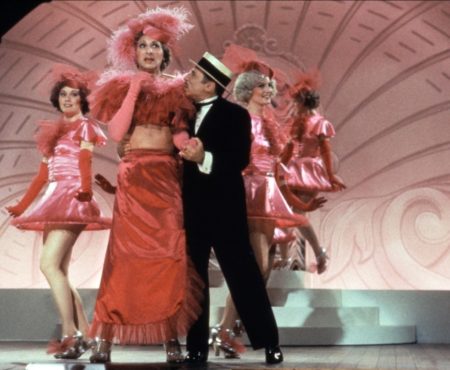
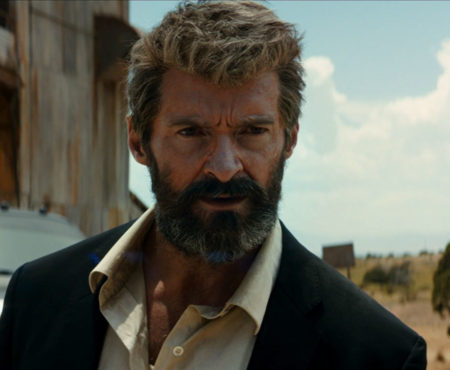
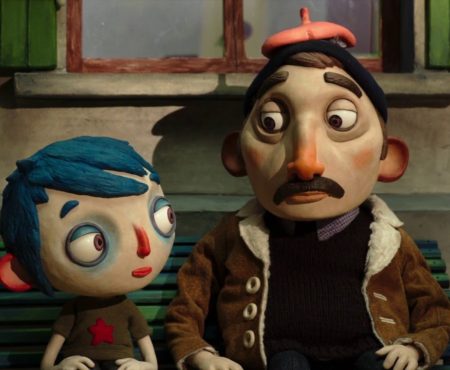
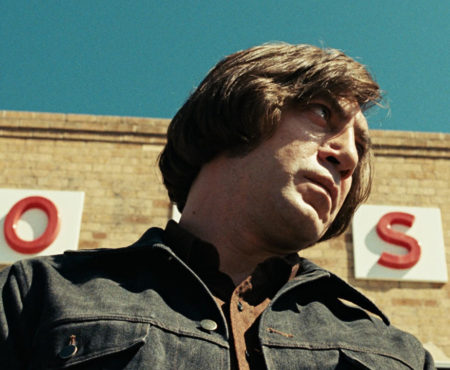
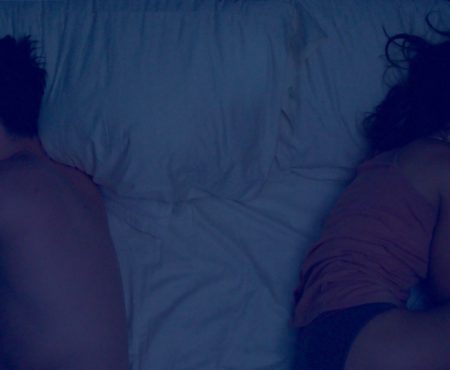

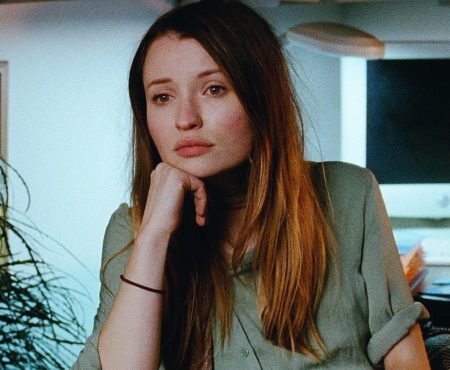

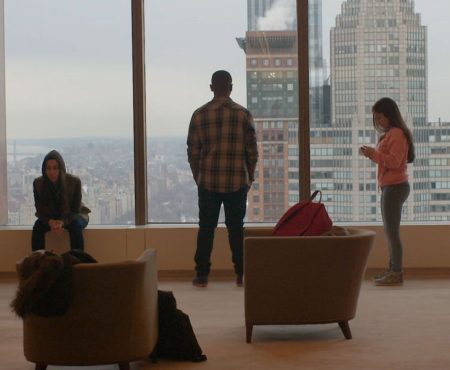
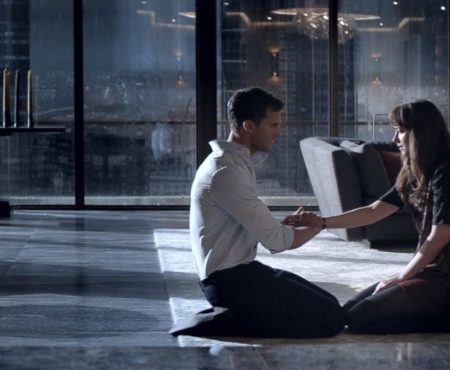
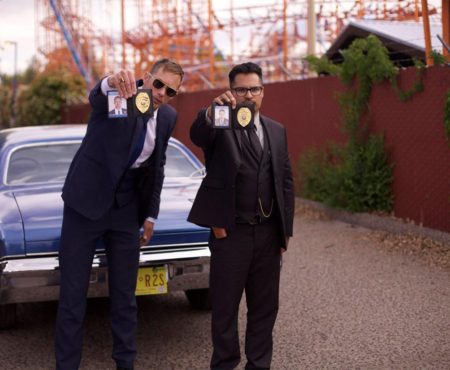
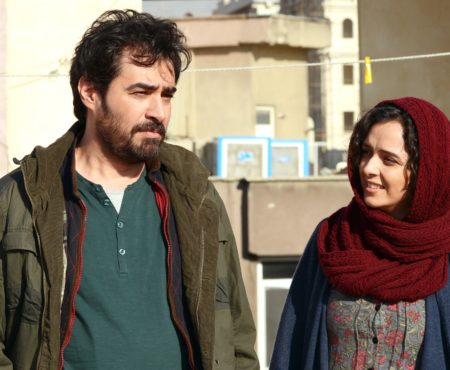
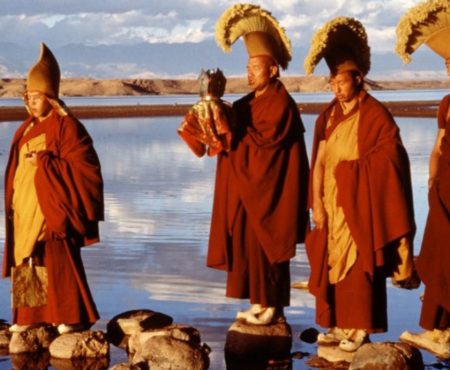

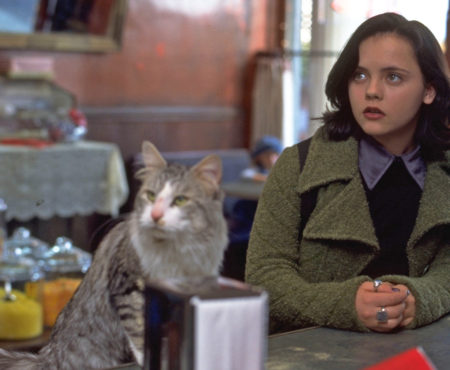
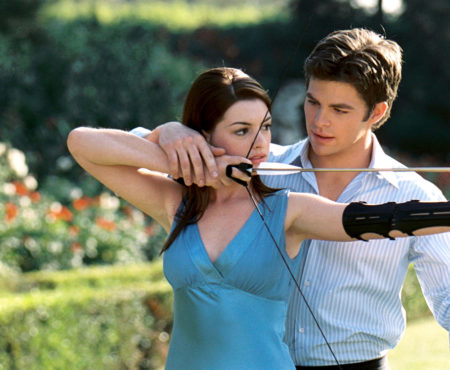

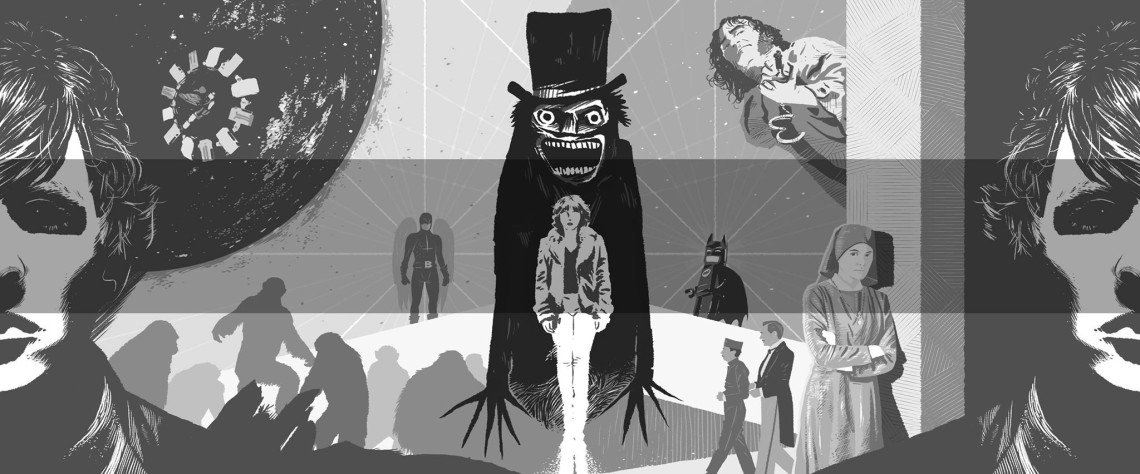
Pingback: My Cinematic Year in Review, 2014 | Daniel Carlson